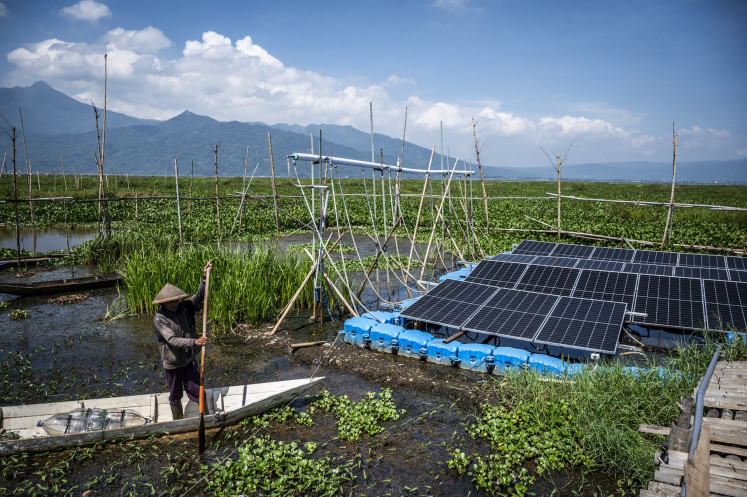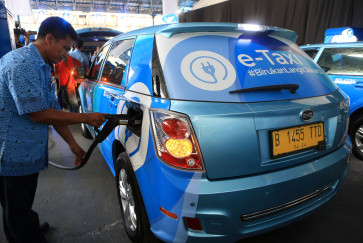Popular Reads
Top Results
Can't find what you're looking for?
View all search resultsPopular Reads
Top Results
Can't find what you're looking for?
View all search resultsHow to deliver future of Southeast Asia’s electric vehicles
Change text size
Gift Premium Articles
to Anyone
I
f there is a region that could use a mobility revolution, it is Southeast Asia. Much of the area grapples with persistent congestion, expanding environmental concerns and surging oil demand to serve transit needs.
Electric vehicles could help make a dramatic change. Consider that in 2018, 1.1 percent of all new passenger cars sold in Europe were battery powered electric vehicles. This number is expected to grow to around 28 percent of light vehicle sales by 2030, according to Bain analysis. Yet, seeing an electric vehicle on the streets of Singapore or Thailand is rare.
Undoubtedly, the economy supporting electrification, mobility, charging and other services in Southeast Asia eventually will be huge. The region’s annual new investment in passenger electric vehicles will grow to US$6 billion by 2030, according to Bain estimates, and another $500 million in new charging infrastructure will be needed to support electrification needs.
On top of this, billions will be invested in telematics, fleets and their management, and passenger services, further increasing the potential profit pool. By our estimate, this growth is likely to be slow over the next few years, but should increase dramatically after 2025.
Other markets offer lessons about what it takes for electric vehicles, typically starting with passenger cars, to gain acceptance. It comes down to four prerequisites: available electric vehicle models, attractive purchase economics in terms of total cost of ownership (TCO) and purchase price, government incentives, and convenient charging infrastructure.
Available electric vehicle models. Walk into a dealership in most ASEAN countries, and you will see few, if any, electric vehicles for sale — and those that are available are typically far more expensive than the alternatives. The most common explanation is that consumer interest is not there.
Most original equipment manufacturers (OEMs) also are not prioritizing their few models for sale in markets that are scaling up outside China, Europe or the US. While many OEMs have announced ambitious plans to augment their electric vehicle portfolios, there will be little effect in the near term for Southeast Asia.


















